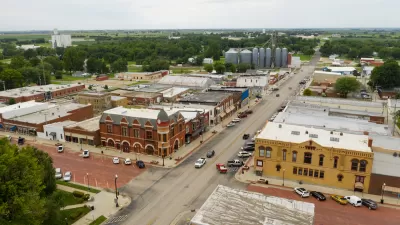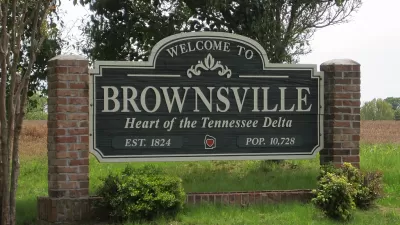The similarities between the nation’s most disadvantaged areas, often rural, reveal the economic patterns that lead to chronic poverty.

In a conversation with the Daily Yonder, H. Luke Shaefer, co-author of The Injustice of Place: Uncovering the Legacy of Poverty in America, discusses the book’s revelations about American poverty.
“The book takes on the surprising (to some) fact that most of the places with the lowest incomes, poorest health outcomes, and worst life chances are rural communities – especially those with large non-white populations,” writes Olivia Weeks. The authors assert that a close study of these places—rather than people—can illuminate patterns of poverty and disenfranchisement.
As Shaefer explains, the places with the deepest disadvantages in the United States “were all places dominated by a single extractive industry for decades, often from the end of the 19th century through the beginning of the 20th. The industries were controlled by a small group of elites but all required large, low-wage labor forces.”
The similarities between America’s most disadvantaged communities reveal the dangers of sole-economy places, Shaefer says. In these communities, the major industries often controlled all other aspects of life as well, and “Systems were developed to reinforce the social order and keep the low-wage labor force in place.” When the key industry went into decline, the community dependent on it had little to fall back on. “So many of the people we got to know in the communities we were in felt completely abandoned by the federal government. Furthermore I think they have very little faith that government could help them even if they tried.”
When it comes to community revitalization efforts, Shaefer notes that, in some cases, upper-class community members organize events and programs that miss the mark with most residents. “I might encourage those who are trying to foster citywide investment to start by listening and asking those with the least what they would like to see, and what community events should look like,” Shaefer adds.
FULL STORY: Q&A: How Studying Place Can Provide Insight on American Poverty

Americans May Be Stuck — But Why?
Americans are moving a lot less than they once did, and that is a problem. While Yoni Applebaum, in his highly-publicized article Stuck, gets the reasons badly wrong, it's still important to ask: why are we moving so much less than before?

Using Old Oil and Gas Wells for Green Energy Storage
Penn State researchers have found that repurposing abandoned oil and gas wells for geothermal-assisted compressed-air energy storage can boost efficiency, reduce environmental risks, and support clean energy and job transitions.

Placekeeping: Setting a New Precedent for City Planners
How a preservation-based approach to redevelopment and urban design can prevent displacement and honor legacy communities.

San Francisco’s Muni Ridership Grew in 2024
The system saw its highest ridership since before the Covid-19 pandemic, but faces a severe budget shortage in the coming year.

Colorado Lawmakers Move to Protect BRT Funding
In the face of potential federal funding cuts, CDOT leaders reasserted their commitment to planned bus rapid transit projects.

Safe Streets Funding in Jeopardy
The Trump administration is specifically targeting bike infrastructure and other road safety projects in its funding cuts.
Urban Design for Planners 1: Software Tools
This six-course series explores essential urban design concepts using open source software and equips planners with the tools they need to participate fully in the urban design process.
Planning for Universal Design
Learn the tools for implementing Universal Design in planning regulations.
Heyer Gruel & Associates PA
City of Moreno Valley
Institute for Housing and Urban Development Studies (IHS)
City of Grandview
Harvard GSD Executive Education
Salt Lake City
NYU Wagner Graduate School of Public Service
City of Cambridge, Maryland




























